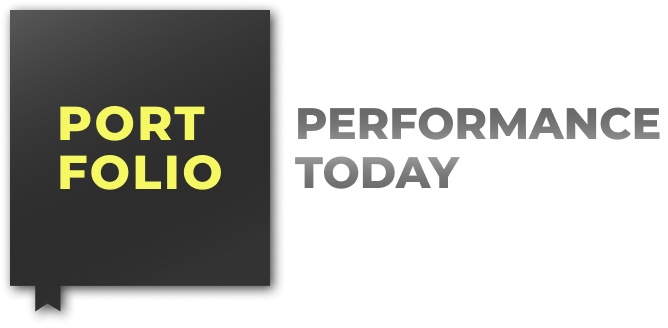
The high degree of focus on tariffs under the new Trump administration has led to a flurry of new analyses attempting to determine their economic effects. One of the most prominent contributions comes from Stephen Mirran — formerly of Hudson Bay Capital and soon-to-be Chairman of the Council of Economic Advisers (CEA) — who published an influential piece titled A User’s Guide to Restructuring the Global Trading System. This plan, dubbed the “Mar-a-Lago Accord” in reference to the Plaza Accord’s attempt to manipulate the dollar, argues that tariffs need not cause harm, provided that currency offsets occur to counterbalance their effects. Mirran’s proposal, which draws upon a currency offset/tariff model, suggests that properly managed tariffs can be effective tools without significant negative repercussions. This assumption is critical to the broader strategy of the Mar-a-Lago Accord.
However, this theory rests upon a number of key assumptions about how tariffs interact with exchange rates and other economic variables. Understanding these assumptions and their limitations is essential for evaluating the validity of Mirran’s broader proposal.
The analysis of tariffs frequently hinges on the extent to which currency exchange rates adjust to offset changes in international tax regimes. As described by Jeanne and Son (2021), the conventional wisdom is that tariffs improve a nation’s balance of trade, which then exerts upward pressure on its currency. Currencies may also adjust due to monetary policy responses aimed at countering inflation or demand shifts, or simply due to altered growth prospects between trading partners, which can attract or repel investment flows. The model further suggests that if the tariffing nation’s currency strengthens by an amount proportional to the tariff, the net price paid by importers remains unchanged, effectively nullifying the impact of the tariff.
This theory can be illustrated with a simple formula:
pm = e(1 + tau)px
Where:
• pm is the price paid by importers, denominated in their currency (USD).
• e is the exchange rate (dollars per foreign currency unit).
• τ is the tariff rate.
• px is the price of the good charged by exporters in their own currency.
For example, if the tariff rate is 10 percent and the foreign currency depreciates by an equivalent 10 percent, the price paid by importers remains almost unchanged. This suggests minimal inflationary impact for the tariffing country, although the same is not true for the exporting country.
What the Model Assumes
The simplified tariff and currency offset model used in the Mar-a-Lago Accord proposal is built upon several critical assumptions. Evaluating these assumptions reveals limitations and potential flaws when applying the model to real-world scenarios.
1. Perfect Currency Adjustment
The model assumes that foreign currencies will depreciate precisely in response to tariffs, counterbalancing their effects. However, exchange rates are influenced by a wide range of factors beyond trade policy, including monetary policy, geopolitical events, speculative flows, and investor sentiment. Variability and lagged adjustments can result in considerable deviations from the expected offset, undermining the model’s reliability.
Example: In 2018, US tariffs on Chinese imports did not result in a clean, offsetting depreciation of the Chinese yuan. Instead, the yuan’s adjustment was inconsistent, heavily influenced by government intervention and broader economic factors. As a result, import prices rose for American consumers despite expectations of a currency offset.
2. Incomplete Passthrough from Exchange Rates to Exporter Prices
The model presumes full passthrough from exchange rate changes to exporter prices. In practice, passthrough is often incomplete due to price stickiness, pre-existing contracts, and firms’ strategic pricing decisions. Many international transactions are invoiced in US dollars, which can result in currency fluctuations affecting exporter profit margins rather than import prices.
Example: During the US dollar appreciation from 2014 to 2016, many exporters absorbed some of the currency-related cost increases rather than fully passing them on to consumers, in order to maintain market share.
3. Incomplete Passthrough from Wholesale to Retail Prices
Even if exchange rate changes affect exporter prices, the assumption that wholesale price changes directly impact retail prices is often unrealistic. Retailers may absorb part of the cost increases to remain competitive, especially in markets with highly elastic demand. Moreover, tariffs often create friction in supply chains, resulting in delays and other inefficiencies that further distort prices.
Example: Retailers such as Walmart, which source heavily from China, have sometimes chosen to absorb tariff-related cost increases rather than raising prices, preserving their competitive edge and avoiding customer loss.
4. Overlooking Invoicing Currency Effects
The assertion that exchange rate adjustments will fully offset tariffs neglects the fact that many international transactions are invoiced in US dollars. This means that currency fluctuations might impact exporter profit margins rather than retail import prices, weakening the expected offsetting effect of depreciation.
5. Ignoring Supply Chain Complexities
The model oversimplifies value-added origins, assuming that most inputs are produced domestically within the exporting nation. In reality, global supply chains are complex and intertwined. Tariffs applied to one country can have cascading effects through intermediate goods produced elsewhere, diluting the impact of currency adjustments.
Example: Apple’s iPhones, assembled in China but containing components sourced from Japan, South Korea, and the US, illustrate how tariffs imposed on Chinese goods can affect upstream suppliers and complicate currency adjustment mechanisms.
6. Revenue vs. Trade Balance Conflict
The argument suggests that if tariffs lead to higher prices, they may reduce consumer welfare and economic growth. However, if currency adjustments nullify price increases, tariffs generate revenue without rebalancing trade flows, potentially undermining the intended economic objectives.
These assumptions — perfect exchange rate adjustment, pure national value-added origin, complete passthrough from exchange rates to exporter prices, and complete passthrough from wholesale to retail prices — are rarely, if ever, fully met. Models relying on these assumptions are prone to producing oversimplified and unrealistic projections.
Tariff models relying on the assumptions outlined above offer an extremely limited and entirely misleading view of economic realities. As justifications for broad, sweeping trade measures, particularly when those measures interact with complex, modern supply chains, they are inadequate. The number of factors that must not only align precisely but also remain consistently aligned to minimize the economic impact of tariffs is considerable enough to be dismissed as unlikely.
